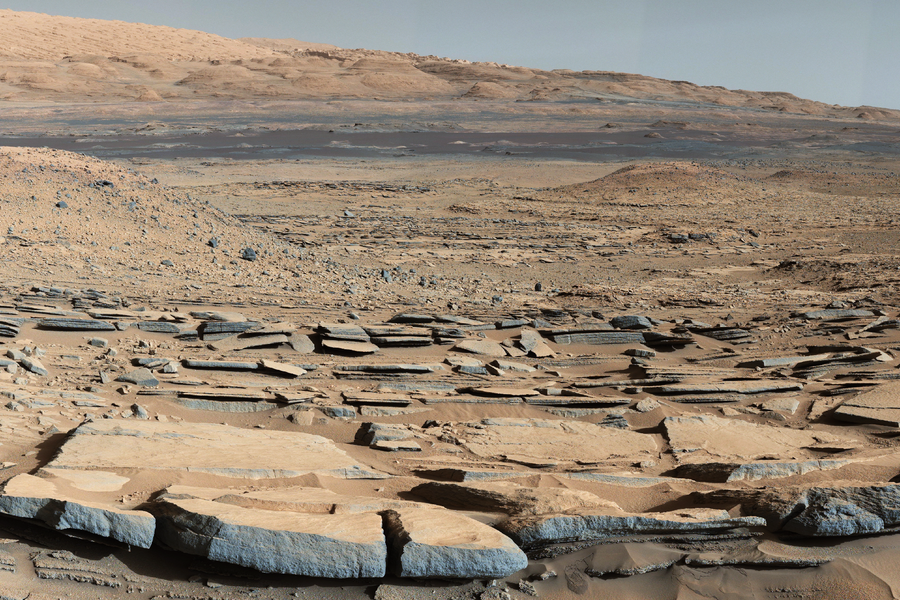Mars had more than water, it had lakes too: What could that mean?
Loading...
Last week NASA confirmed the presence of water on Mars. But today, they’ve released a new study that suggests lakes on Mars’ surface stored enough water to support life billions of years ago.
Observations from NASA’s Curiosity rover indicate “that a series of long-lived streams and lakes existed at some point between about 3.8 to 3.3 billion years ago,” says Ashwin Vasavada, Mars Science Laboratory project scientist at NASA's Jet Propulsion Laboratory in Pasadena, Calif.
“Using data from the Curiosity rover, the team has determined that, long ago, water helped deposit sediment into Gale Crater, where the rover landed more than three years ago,” JPL's Whitney Clavin writes. “The sediment deposited as layers that formed the foundation for Mount Sharp, the mountain found in the middle of the crater today.”
Previously, scientists believed that wet conditions were transient or only existed underground, but this discovery undermines that theory. The new analysis not only proves that water existed above ground, but also that it was long-lasting.
Furthermore, Curiosity images confirm that the bottom layers of Mount Sharp were in fact created by deposits from rivers and lakes, over a period of about 500 million years. The images show that sand and gravel from the northern wall of the Gale Crater were transported by shallow streams that formed deltas at an ancient lake. Scientists estimate the lakes existed for over 10,000 years, the Guardian reported.
But how does the existence of an ancient lake answer the question on everyone’s mind: What does this mean for the possibility of life on Mars today?
Lead author of the study and California Institute of Technology professor John Grotzinger, told Space.com, "Even if the lake goes away, there's still going to be a groundwater table. If life had evolved on Mars, you now have a habitat which is perpetually wet that would allow microbes to be sustained."
As scientists, with the aid of rovers, continue to learn more about the Red Planet, the possibility of life becomes seemingly more and more attainable, but many unknowns still remain.
"What we thought we knew about water on Mars is constantly being put to the test,” Michael Meyer, lead scientist for NASA’s Mars Exploration Program at NASA Headquarters in Washington, told Mr. Clavin. "It’s clear that the Mars of billions of years ago more closely resembled Earth than it does today. Our challenge is to figure out how this more clement Mars was even possible, and what happened to that wetter Mars."






